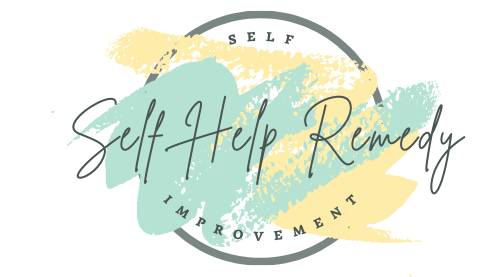How To Catch A Pathological Liar
Imagine having a conversation where the truth seems to slip and slide away. You might wonder, ‘Is this person lying to me on purpose?’ For some individuals, lying can be a compulsive behavior known as ‘pathological lying’. It is a complex issue that raises many concerns and questions.
I want to clarify what pathological lying is. It is a persistent behavior characterized by the habitual or compulsive telling of lies. It is not just an occasional white lie here and there; it is a consistent pattern of deception. Pathological liars often concoct stories that range from slightly exaggerated truths to grand, intricate falsehoods without apparent benefit or reason.
Understanding the motivation behind such lies can be tough. For some, it is a psychological defense mechanism or a means to gain attention or sympathy. Importantly, it is crucial to distinguish between someone who lies pathologically and someone who might lie due to other conditions or circumstances.
When we talk about pathological lying, we are also discussing our response to it. It demands empathy and a level of understanding. The goal is not to judge, but to understand the context behind the action. Consider their background, possible stressors, or mental health conditions that could contribute to such behaviors.
Now that we have explored what constitutes pathological lying and its psychological underpinnings, the next step is learning how we can identify such patterns of behavior. In the following section, I will share proven strategies that can help discern the truth from fiction, ensuring you are equipped with knowledge to spot when someone might be weaving a tale rather than sharing the facts.
Strategies to Detect Pathological Lying
If you suspect you are dealing with a pathological liar, your next step is to identify concrete strategies to detect their deception. I will guide you through some techniques that can help you discern truth from fiction, prioritizing safety and respect throughout the process.
First, be aware of verbal and non-verbal cues. Inconsistent stories, excessive details, and unnecessary technical jargon can be verbal red flags. Non-verbally, you might notice nervous gestures, avoidance of eye contact, or disproportionate emotional responses that do not align with the content of their claims.
Context matters greatly. A lie can often be spotted by comparing what is being said to known facts and previous statements. Maintain an awareness of situations where the individual’s words seem out of place or exaggerated, and use this environmental context to critically evaluate their statements.
Both technology and good, old-fashioned intuition can serve as your allies. Tools ranging from digital fact-checking to lie detector tests could theoretically be employed, but remember that the simplest tools at your disposal are observation and critical thinking.
Above all, when you are on the path to uncovering deception, prioritize personal safety. If the lie has the potential to escalate into a dangerous situation, consider seeking professional assistance rather than facing the potential wrath of a pathological liar alone.
After detecting lying, the challenge is devising a plan to proceed. It is crucial to anticipate how the individual might react and prepare for the next steps in a tactful and composed manner.
Responding to Discovery: Predicting and Understanding Reactions
Once you have gathered your facts and feel ready to confront a pathological liar, it is essential to anticipate their reactions. Those adept at lying might respond in a variety of ways, often making it difficult to navigate the conversation.
I advise you to remain calm and non-accusatory; confrontation is not about winning an argument, but understanding the situation. A heated exchange can escalate quickly and lose the focus of addressing the lie.
Expect denial. It is a common defense mechanism, especially for those who are skilled in deception. By preparing for this, you safeguard yourself from the frustration that can come with their refutations.
Conflicts and accusations may follow. A pathological liar might create stories to cover their tracks or shift blame. Keeping your cool here is key. Stay firm and focused on the facts without resorting to personal attacks.
In terms of navigating the aftermath, remember that catching someone in a lie does not always lead to an immediate resolution. Healing and repairing trust, if desired, takes time and often requires a thoughtful approach that includes setting boundaries and consequences.
The Nature of Denial: Why Acknowledgment is Uncommon
People often wonder why it is hard for someone to admit to lying, especially after they have been caught. Denial is a complex defense mechanism. It protects an individual’s ego from the stings of reality. When addressing why people deny wrongdoing, it is essential to explore the psychological underpinnings that feed this denial. People may fear the loss of respect or feel cornered, leading them to double down rather than conceding.
Society’s response to lying often compounds the issue, with social stigma attaching to dishonesty yet providing few paths for redemption. This tremendously influences why admitting to misdeeds can be so challenging. That is why creating an environment that does not condone lying, but rather encourages reformation and honesty, is so critical.
Approaching a liar with empathy and signaling a willingness to understand and move past the issue can sometimes break through the barriers of denial. It is not a guaranteed fix, but it creates a space where honesty can gradually replace deception. The ending goal is not just about catching someone in a lie; it is about cultivating a groundwork for truth and rebuilding trust.
Encouraging responsibility and accountability is part of the equation. It is about initiating a thoughtful dialogue and perhaps paving the way for the other person’s self-reflection and personal growth. While forgiveness may not be immediate, it can set a stage for healing and, perhaps, a change in behavior. To move forward, both parties need to recognize the past, but not be anchored by it.


